
漢德百科全書 | 汉德百科全书
 Nordmazedonien
Nordmazedonien
 Albania
Albania
 Andorra
Andorra
 Armenia
Armenia
 Azerbaijan
Azerbaijan
 Belgium
Belgium
 Bosnia Herzegovina
Bosnia Herzegovina
 Bulgaria
Bulgaria
 Denmark
Denmark
 Germany
Germany
 Estonia
Estonia

 European Union
European Union
 Finland
Finland
 France
France
 Georgia
Georgia
 Greece
Greece
 Ireland
Ireland
 Iceland
Iceland
 Italy
Italy
 Kosovo
Kosovo
 Croatia
Croatia
 Latvia
Latvia
 Liechtenstein
Liechtenstein
 Lithuania
Lithuania
 Luxembourg
Luxembourg
 Malta
Malta
 Moldawien
Moldawien
 Monaco
Monaco
 Montenegro
Montenegro
 Netherlands
Netherlands
 Nordmazedonien
Nordmazedonien
 Norwegen
Norwegen
 Austria
Austria

 Party and government
Party and government

 Party and government
Party and government
 European Political Community Summit
European Political Community Summit
 Poland
Poland
 Portugal
Portugal
 Romania
Romania
 San Marino
San Marino
 Sweden
Sweden
 Switzerland
Switzerland
 Serbia
Serbia
 Slovakia
Slovakia
 Slovenia
Slovenia
 Spain
Spain
 Czech Republic
Czech Republic
 Turkey
Turkey
 Ukraine
Ukraine
 Hungary
Hungary
 United Kingdom
United Kingdom
 Cyprus
Cyprus

Die Europäische Politische Gemeinschaft (EPG)[1] (französisch Communauté politique européenne, CPE; englisch European Political Community, EPC) ist eine europäische, zwischenstaatliche Organisation aus 47 europäischen und vorderasiatischen Staaten, die in den Bereichen Politik, Sicherheit, Energie, Verkehr, Investitionen, Infrastruktur und Personenverkehr zusammenarbeiten. Sie ist eine eigene Institution, welche weder mit der Europäischen Union (die zu den Teilnehmern der EPG gehört) noch mit dem Europarat zusammenhängt. Das EPG-Gründungstreffen fand am 6. Oktober 2022 in der tschechischen Hauptstadt Prag statt.
Im Rahmen der EPG sollen die EU-Beitrittskandidaten, die EFTA-Mitgliedstaaten sowie das Vereinigte Königreich als ehemaliges EU-Mitglied enger an die Europäische Union gebunden und ihnen so eine Möglichkeit der Mitarbeit in deren Politikfeldern gegeben werden, ohne Vollmitglied sein zu müssen. Daher wurde dieses Format auch bereits als eine Art „assoziierte EU-Mitgliedschaft“ beschrieben. Als Hintergrund ist auch zu sehen, dass die derzeitigen Beitrittskandidaten größtenteils als noch nicht beitrittsfähig angesehen werden, man ihrem Wunsch der engeren Kooperation aber (zunächst) auf diese Weise entsprechen will bzw. andere Teilnehmerstaaten derzeit nicht EU-Mitglied werden wollen. Fast alle Teilnehmer sind gleichzeitig auch Mitglied des Europarats.
Während der Vorschlag der Europäischen Politischen Gemeinschaft von 1952 ein Versuch war, eine umfassende politische Integration europäischer Staaten zu verwirklichen, und an dieser nur die sechs damaligen Mitglieder der Europäischen Gemeinschaft für Kohle und Stahl (EGKS oder auch „Montanunion“) teilnehmen sollten, hat die neue, 70 Jahre später vorgeschlagene, Gemeinschaft einen lockereren, intergouvernmentalen Ansatz.
欧洲政治共同体(英語:European Political Community,简称:EPC),是成立于2022年的欧洲政治和战略讨论平台。该集团于2022年10月在捷克布拉格举行首届会议,欧盟所有27个成员国及17个非欧盟国家首脑与会。




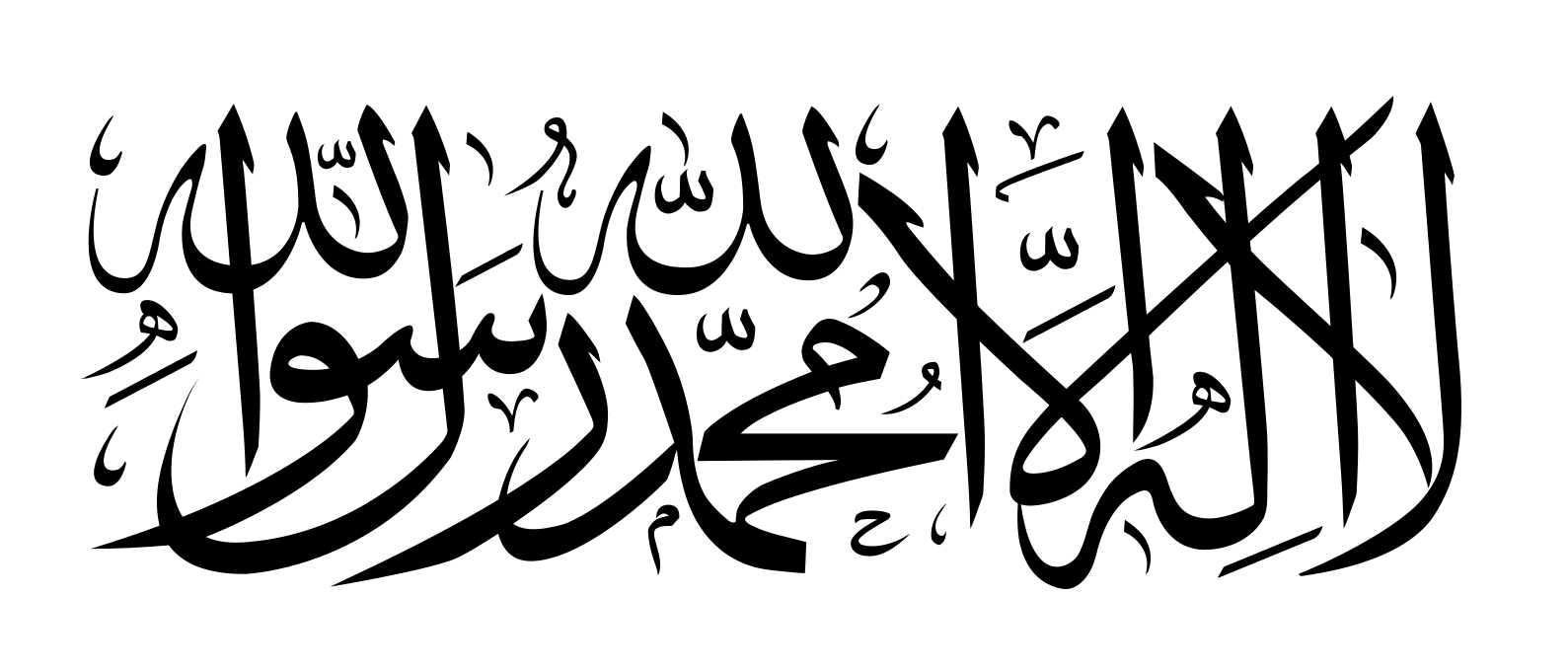 Afghanistan
Afghanistan
 Egypt
Egypt
 Albania
Albania
 Angola
Angola
 Antigua and Barbuda
Antigua and Barbuda
 Argentina
Argentina
 Armenia
Armenia
 Australia
Australia
 Bahrain
Bahrain
 Bangladesh
Bangladesh
 Barbados
Barbados
 Belgium
Belgium
 Belize
Belize
 Benin
Benin
 Bolivia
Bolivia
 Botsuana
Botsuana
 Brazil
Brazil
 Brunei Darussalam
Brunei Darussalam
 Bulgaria
Bulgaria
 Burkina Faso
Burkina Faso
 Burundi
Burundi
 Chile
Chile
 China
China
 Columbia
Columbia
 Costa Rica
Costa Rica
 Côte d´Ivoire
Côte d´Ivoire
 Cuba
Cuba
 Denmark
Denmark
 Demokratische Republik Kongo
Demokratische Republik Kongo
 Germany
Germany
 Dominica
Dominica
 Dominikanische Republik
Dominikanische Republik
 Djibouti
Djibouti
 Ecuador
Ecuador
 Estonia
Estonia

 European Union
European Union
 Fidschi
Fidschi

 Financial
Financial
 Finland
Finland
 France
France
 Gabun
Gabun
 Gambia
Gambia
 Georgia
Georgia
 Ghana
Ghana
 Grenada
Grenada
 Greece
Greece
 Guatemala
Guatemala
 Guinea
Guinea
 Guinea-Bissau
Guinea-Bissau
 Guyana
Guyana
 Honduras
Honduras
 Hongkong Tebiexingzhengqu-HK
Hongkong Tebiexingzhengqu-HK
 India
India
 Indonesia
Indonesia
 Ireland
Ireland
 Iceland
Iceland
 Israel
Israel
 Italy
Italy
 Jamaika
Jamaika
 Japan
Japan
 Yemen
Yemen
 Jordan
Jordan
 Cambodia
Cambodia
 Cameroon
Cameroon
 Canada
Canada
 Kap Verde
Kap Verde
 Kasachstan
Kasachstan
 Katar
Katar
 Kenya
Kenya
 Kyrgyzstan
Kyrgyzstan
 Croatia
Croatia
 Kuwait
Kuwait
 Laos
Laos
 Lesotho
Lesotho
 Latvia
Latvia
 Liberia
Liberia
 Liechtenstein
Liechtenstein
 Lithuania
Lithuania
 Luxembourg
Luxembourg
 Macau Tebiexingzhengqu-MO
Macau Tebiexingzhengqu-MO
 Madagaskar
Madagaskar
 Malawi
Malawi
 Malta
Malta
 Morocco
Morocco
 Mauritania
Mauritania
 Mauritius
Mauritius
 Mexico
Mexico
 Moldawien
Moldawien

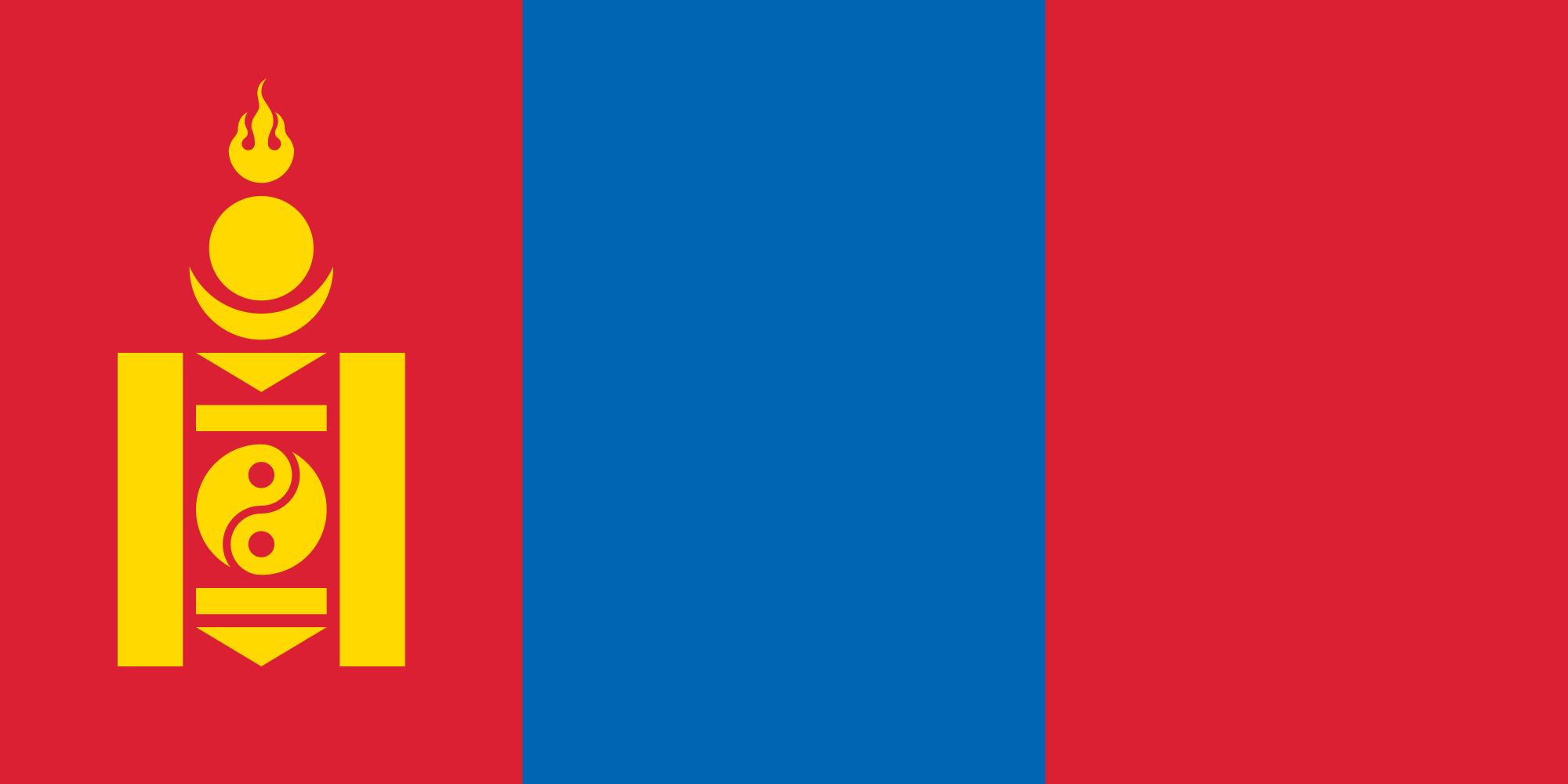 Mongolei
Mongolei
 Montenegro
Montenegro
 Mosambik
Mosambik
 Myanmar
Myanmar
 Namibia
Namibia
 Nepal
Nepal
 New Zealand
New Zealand
 Nicaragua
Nicaragua
 Netherlands
Netherlands
 Niger
Niger
 Nigeria
Nigeria
 Nordmazedonien
Nordmazedonien
 Norwegen
Norwegen
 Oman
Oman
 Austria
Austria
 Pakistan
Pakistan
 Panama
Panama
 Papua-Neuguinea
Papua-Neuguinea
 Paraguay
Paraguay
 Peru
Peru
 Philippines
Philippines
 Poland
Poland
 Portugal
Portugal
 Republik El Salvador
Republik El Salvador
 Republik Haiti
Republik Haiti
 Republik Kongo
Republik Kongo
 Republic of Korea
Republic of Korea
 Ruanda
Ruanda
 Romania
Romania
 Russia
Russia
 Salomonen
Salomonen
 Sambia
Sambia
 Samoa
Samoa
 Saudi Arabia
Saudi Arabia
 Sweden
Sweden
 Sweden
Sweden
 Switzerland
Switzerland
 Genf
Genf
 Senegal
Senegal
 Seychellen
Seychellen
 Sierra Leone
Sierra Leone
 Simbabwe
Simbabwe
 Singapore
Singapore
 Slovakia
Slovakia
 Slovakia
Slovakia
 Slovenia
Slovenia
 Slovenia
Slovenia
 Spain
Spain
 Sri Lanka
Sri Lanka
 Saint Kitts and Nevis
Saint Kitts and Nevis
 St. Lucia
St. Lucia
 St. Vincent and the Grenadines
St. Vincent and the Grenadines
 South Africa
South Africa
 Suriname
Suriname
 Swasiland
Swasiland
 Tajikistan
Tajikistan
 Taiwan Sheng-TW
Taiwan Sheng-TW
 Tansania
Tansania
 Thailand
Thailand
 Togo
Togo
 Tonga
Tonga
 Trinidad und Tobago
Trinidad und Tobago
 Tschad
Tschad
 Czech Republic
Czech Republic
 Tunisia
Tunisia
 Turkey
Turkey
 Uganda
Uganda
 Ukraine
Ukraine
 Hungary
Hungary
 Uruguay
Uruguay
 Vanuatu
Vanuatu
 Venezuela
Venezuela
 United Arab Emirates
United Arab Emirates
 United States
United States
 United Kingdom
United Kingdom
 Vietnam
Vietnam

 Important International Organizations
Important International Organizations
 World Trade Organization
World Trade Organization
 Roberto Azevêdo
Roberto Azevêdo
 World Trade Organization
World Trade Organization
 Mike Moore
Mike Moore
 World Trade Organization
World Trade Organization
 Ngozi Okonjo-Iweala
Ngozi Okonjo-Iweala
 World Trade Organization
World Trade Organization
 Pascal Lamy
Pascal Lamy
 World Trade Organization
World Trade Organization
 Peter Sutherland
Peter Sutherland
 World Trade Organization
World Trade Organization
 Renato Ruggiero
Renato Ruggiero
 World Trade Organization
World Trade Organization
 Supachai Panitchpakdi
Supachai Panitchpakdi
 Central African Republic
Central African Republic
 Cyprus
Cyprus


世界贸易组织(简称世贸组织或世贸;英语:World Trade Organization,缩写为 WTO;法语:Organisation Mondiale du Commerce,缩写为 OMC;西班牙语:Organización Mundial del Comercio,缩写为 OMC)是负责监督成员经济体之间各种贸易协议得到执行的一个国际组织,前身是1948年起实施的关税及贸易总协定的秘书处。
世贸总部位于瑞士日内瓦,现任总干事是罗伯托·阿泽维多。截至2016年7月29日,世界贸易组织共有164个成员。[5]世界贸易组织的职能是调解纷争,加入WTO不算签订一种多边贸易协议,但其设置的入会门槛可以做为愿意降低关税、法政上配合、参与国际贸易的门票,它是贸易体制的组织基础和法律基础,是众多贸易协定的管理者,是各成员贸易立法的监督者,是就贸易提供解决争端和进行谈判的场所。该机构是当代最重要的国际经济组织之一,其成员间的贸易额占世界贸易额的绝大多数,被称为“经济联合国”。
世界貿易機関(せかいぼうえききかん、英: World Trade Organization、略称:WTO)は、自由貿易促進を主たる目的として創設された国際機関である。常設事務局がスイスのジュネーブに置かれている。
GATT(ガット)ウルグアイ・ラウンドにおける合意によって、世界貿易機関を設立するマラケシュ協定(WTO設立協定)に基づいて1995年1月1日にGATTを発展解消させて成立した。
本来GATTは、第二次世界大戦後の安定を見据え、国際通貨基金および国際復興開発銀行とともに設立が予定されていた国際貿易機関(ITO)の設立準備の際に、暫定協定として結ばれたものであった。国際貿易機関の設立が廃案となり、GATTがその代替として発展強化されていくうちに、再びこの分野の常設機関が求められ、WTOが設立されることとなった。発展解消であるため、GATTの事務局及び事務局長もWTOへと引き継がれることとなった[4]。
WTOはGATTを継承したものであるが、GATTが協定(Agreement)に留まったのに対し、WTOは機関(Organization)であるのが根本的な違いである。
を基本原則としている。また、物品貿易だけでなく金融、情報通信、知的財産権やサービス貿易も含めた包括的な国際通商ルールを協議する場である。
対抗処置の発動では、紛争処理機関(パネル)の提訴に対し全加盟国による反対がなければ採択されるというネガティブ・コンセンサス方式(逆コンセンサス方式)を採用した強力な紛争処理能力を持つ。これは国際組織としては稀な例であり、コンセンサス方式を採っていたGATTとの大きな違いで、WTOの特徴の一つといえる。
新多角的貿易交渉(新ラウンド)は、2001年11月にカタールのドーハで行われた第4回WTO閣僚会議で開始を決定し、ドーハ・ラウンドと呼ばれていた。2002年2月1日の貿易交渉委員会で新ラウンドがスタートした。しかし9年に及ぶ交渉は先進国と、急速に台頭してきたBRICsなど新興国との対立によって中断と再開を繰り返した末、ジュネーブで行われた第4回WTO閣僚会議(2011年12月17日)で「交渉を継続していくことを確認するものの、近い将来の妥結を断念する」(議長総括)となり事実上停止状態になった。
その後、2013年のバリ島における閣僚会議で、貿易円滑化協定を含む合意が成立し、2014年7月まで貿易円滑化協定をWTO協定に加える(附属書1Aに追加)するための文書を一般理事会で採択すべきとされた[5]。しかしインドが合意を蒸し返す状態で反対したため期限までに採択できなかった[6]。その後食糧備蓄への補助金の問題で先進国側が譲歩することでようやくインドが合意し、2014年11月27日の一般理事会で貿易円滑化協定が採択された[6]。WTO加盟国の3分の2が改正を受諾した日に発効することになっており、2017年2月22日にこの要件を満たし、協定が発効した。
The World Trade Organization (WTO) is an intergovernmental organization that regulates international trade. The WTO officially commenced on 1 January 1995 under the Marrakesh Agreement, signed by 124 nations on 15 April 1994, replacing the General Agreement on Tariffs and Trade (GATT), which commenced in 1948. It is the largest international economic organization in the world.[5][6]
The WTO deals with regulation of trade in goods, services and intellectual property between participating countries by providing a framework for negotiating trade agreements and a dispute resolution process aimed at enforcing participants' adherence to WTO agreements, which are signed by representatives of member governments[7]:fol.9–10 and ratified by their parliaments.[8] The WTO prohibits discrimination between trading partners, but provides exceptions for environmental protection, national security, and other important goals.[9] Trade-related disputes are resolved by independent judges at the WTO through a dispute resolution process.[9]
The WTO's current Director-General is Roberto Azevêdo,[10][11] who leads a staff of over 600 people in Geneva, Switzerland.[12] A trade facilitation agreement, part of the Bali Package of decisions, was agreed by all members on 7 December 2013, the first comprehensive agreement in the organization's history.[13][14] On 23 January 2017, the amendment to the WTO Trade Related Aspects of Intellectual Property Rights (TRIPS) Agreement marks the first time since the organization opened in 1995 that WTO accords have been amended, and this change should secure for developing countries a legal pathway to access affordable remedies under WTO rules.[15]
Studies show that the WTO boosted trade,[16][17][9] and that barriers to trade would be higher in the absence of the WTO.[18] The WTO has highly influenced the text of trade agreements, as "nearly all recent [preferential trade agreements (PTAs)] reference the WTO explicitly, often dozens of times across multiple chapters... in many of these same PTAs we find that substantial portions of treaty language—sometime the majority of a chapter—is copied verbatim from a WTO agreement."[19]
L'Organisation mondiale du commerce (OMC ; en anglais : World Trade Organization, WTO, en espagnol : Organización Mundial del Comercio, OMC) est une organisation internationale qui s'occupe des règles régissant le commerce international entre les pays. Au cœur de l'organisation se trouvent les accords de l'OMC, négociés et signés en avril 1994 à Marrakech1 par la majeure partie des puissances commerciales du monde2 et ratifiés par leurs assemblées parlementaires. L'OMC a pour but principal de favoriser l'ouverture commerciale. Pour cela, elle tâche de réduire les obstacles au libre-échange, d'aider les gouvernements à régler leurs différends commerciaux et d'assister les exportateurs, les importateurs et les producteurs de marchandises et de services dans leurs activités.
Depuis 2001, le cycle de négociation mené par l'OMC est le Cycle de Doha3. Bien que l'OMC ne soit pas une agence spécialisée de l'ONU, elle entretient des liens avec cette dernière4. Le siège de l'OMC est au Centre William-Rappard, à Genève. Depuis le 1er septembre 2013, l'organisation est présidée par le Brésilien Roberto Azevêdo qui a été élu directeur général.
L'Organizzazione mondiale del commercio, abbreviato in OMC (in inglese: World Trade Organization, WTO), è un'organizzazione internazionale creata allo scopo di supervisionare numerosi accordi commerciali tra gli stati membri. Vi aderiscono[3] 164 Paesi, a cui se ne aggiungono altri 22 con ruolo di osservatori,[4] comprendendo così oltre il 95% del commercio mondiale di beni e servizi.[5]
La sede dell'OMC si trova, dal 1995, presso il Centro William Rappard a Ginevra, Svizzera.[6]
La Organización Mundial del Comercio (OMC) fue establecida en 1995. Tiene su sede en Ginebra, Suiza, y sus idiomas oficiales son el inglés, el francés y el español. La OMC no forma parte del sistema de las Naciones Unidas, y tampoco de los organismos de Bretton Woods como el Banco Mundial o el FMI.Nota 1
Всеми́рная торго́вая организа́ция (ВТО; англ. World Trade Organization (WTO), фр. Organisation mondiale du commerce (OMC), исп. Organización Mundial del Comercio) — международная организация, созданная 1 января 1995 года с целью либерализации международной торговли и регулирования торгово-политических отношений государств-членов. ВТО образована на основе Генерального соглашения по тарифам и торговле (ГАТТ), заключенного в 1947 году и на протяжении почти 50 лет фактически выполнявшего функции международной организации, но не являвшегося тем не менее международной организацией в юридическом смысле.
ВТО отвечает за разработку и внедрение новых торговых соглашений, а также следит за соблюдением членами организации всех соглашений, подписанных большинством стран мира и ратифицированных их парламентами. ВТО строит свою деятельность, исходя из решений, принятых в 1986—1994 годах в рамках Уругвайского раунда и более ранних договоренностей ГАТТ. Обсуждения проблем и принятие решений по глобальным проблемам либерализации и перспективам дальнейшего развития мировой торговли проходят в рамках многосторонних торговых переговоров (раунды). К настоящему времени проведено 8 раундов таких переговоров, включая Уругвайский, а в 2001 году стартовал девятый в Дохе, Катар. Организация пытается завершить переговоры по Дохийскому раунду переговоров, который был начат с явным акцентом на удовлетворение потребностей развивающихся стран. По состоянию на декабрь 2012 года будущее раунда переговоров в Дохе остаётся неопределённым: программа работы состоит из 21 части, а первоначально установленный окончательный срок 1 января 2005 года был давно пропущен[3]. В ходе переговоров возник конфликт между стремлением к свободной торговле и стремлением множества стран к протекционизму, особенно в плане сельскохозяйственных субсидий. До сих пор эти препятствия остаются главными и мешают любому прогрессу для запуска новых переговоров в рамках Дохийского раунда. По состоянию на июль 2012 года, существуют различные группы переговоров в системе ВТО для решения текущих вопросов в плане сельского хозяйства, что приводит к застою в самих переговорах[4].
Штаб-квартира ВТО расположена в Женеве, Швейцария. Глава ВТО (генеральный директор) — Роберту Карвалью ди Азеведу, в штате самой организации около 600 человек[5].
На 26 апреля 2015 года в ВТО состояли 162 страны[6].
Правила ВТО предусматривают ряд льгот для развивающихся стран. В настоящее время развивающиеся страны — члены ВТО имеют (в среднем) более высокий относительный уровень таможенно-тарифной защиты своих рынков по сравнению с развитыми. Тем не менее, в абсолютном выражении общий размер таможенно-тарифных санкций в развитых странах гораздо выше, вследствие чего доступ на рынки высокопередельной продукции из развивающихся стран серьёзно ограничен[7].
Правила ВТО регулируют только торгово-экономические вопросы. Попытки США и ряда европейских стран начать дискуссию об условиях труда (что позволило бы считать недостаточную законодательную защиту работников конкурентным преимуществом) были отвергнуты из-за протестов развивающихся стран, которые утверждали, что такие меры только ухудшат благосостояние работников в связи с сокращением числа рабочих мест, снижением доходов и уровня конкурентоспособности[7].
Mitglieder der WTO
| Staat | Beitrittsdatum |
|---|---|
| 30. Juni 1995 | |
| 29. Juli 2016 | |
| 8. September 2000 | |
| 23. November 1996 | |
| 1. Januar 1995 | |
| 1. Januar 1995 | |
| 5. Februar 2003 | |
| 1. Januar 1995 | |
| 1. Januar 1995 | |
| 1. Januar 1995 | |
| 1. Januar 1995 | |
| 1. Januar 1995 | |
| 1. Januar 1995 | |
| 22. Februar 1996 | |
| 12. September 1995 | |
| 31. Mai 1995 | |
| 1. Januar 1995 | |
| 1. Januar 1995 | |
| 1. Dezember 1996 | |
| 3. Juni 1995 | |
| 23. Juli 1995 | |
| 1. Januar 1995 | |
| 11. Dezember 2001 | |
| 1. Januar 1995 | |
| 1. Januar 1995 | |
| 1. Januar 1995 | |
| 1. Januar 1995 | |
| 9. März 1995 | |
| 31. Mai 1995 | |
| 21. Januar 1996 | |
| 7. Mai 1995 | |
| 1. Januar 1995 | |
| 13. November 1999 | |
| 1. Januar 1995 | |
| 1. Januar 1995 | |
| 14. Januar 1996 | |
| 1. Januar 1995 | |
| 1. Januar 1995 | |
| 1. Januar 1995 | |
| 23. Oktober 1996 | |
| 14. Juni 2000 | |
| 1. Januar 1995 | |
| 22. Februar 1996 | |
| 1. Januar 1995 | |
| 21. Juli 1995 | |
| 25. Oktober 1995 | |
| 31. Mai 1995 | |
| 1. Januar 1995 | |
| 30. Januar 1996 | |
| 1. Januar 1995 | |
| 1. Januar 1995 | |
| 1. Januar 1995 | |
| 1. Januar 1995 | |
| 1. Januar 1995 | |
| 1. Januar 1995 | |
| 21. April 1995 | |
| 1. Januar 1995 | |
| 9. März 1995 | |
| 26. Juni 2014 | |
| 1. Januar 1995 | |
| 11. April 2000 | |
| 13. Oktober 2004 | |
| 13. Dezember 1995 | |
| 1. Januar 1995 | |
| 23. Juli 2008 | |
| 30. November 2015 | |
| 13. Januar 1996 | |
| 1. Januar 1995 | |
| 20. Dezember 1998 | |
| 30. April 1995 | |
| 1. Januar 1997 | |
| 27. März 1997 | |
| 30. November 2000 | |
| 20. April 1995 | |
| 1. Januar 1995 | |
| 2. Februar 2013 | |
| 31. Mai 1995 | |
| 10. Februar 1999 | |
| 14. Juli 2016 | |
| 1. September 1995 | |
| 31. Mai 2001 | |
| 1. Januar 1995 | |
| 1. Januar 1995 | |
| 17. November 1995 | |
| 29. April 2012 | |
| 31. Mai 1995 | |
| 1. Januar 1995 | |
| 31. Mai 1995 | |
| 31. Mai 1995 | |
| 1. Januar 1995 | |
| 1. Januar 1995 | |
| 31. Mai 1995 | |
| 1. Januar 1995 | |
| 4. April 2003 | |
| 1. Januar 1995 | |
| 26. Juli 2001 | |
| 29. Januar 1997 | |
| 26. August 1995 | |
| 1. Januar 1995 | |
| 1. Januar 1995 | |
| 23. April 2004 | |
| 1. Januar 1995 | |
| 3. September 1995 | |
| 1. Januar 1995 | |
| 13. Dezember 1996 | |
| 1. Januar 1995 | |
| 1. Januar 1995 | |
| 9. November 2000 | |
| 1. Januar 1995 | |
| 1. Januar 1995 | |
| 6. September 1997 | |
| 9. Juni 1996 | |
| 1. Januar 1995 | |
| 1. Januar 1995 | |
| 1. Januar 1995 | |
| 1. Juli 1995 | |
| 1. Januar 1995 | |
| 22. Mai 1996 | |
| 1. Januar 1995 | |
| 22. August 2012 | |
| 26. Juli 1996 | |
| 1. Januar 1995 | |
| 11. Dezember 2005 | |
| 10. Mai 2012 | |
| 1. Januar 1995 | |
| 1. Januar 1995 | |
| 1. Januar 1995 | |
| 26. April 2015 | |
| 23. Juli 1995 | |
| 5. März 1995 | |
| 1. Januar 1995 | |
| 1. Januar 1995 | |
| 30. Juli 1995 | |
| 1. Januar 1995 | |
| 1. Januar 1995 | |
| 21. Februar 1996 | |
| 1. Januar 1995 | |
| 1. Januar 1995 | |
| 1. Januar 1995 | |
| 1. Januar 1995 | |
| 1. Januar 1995 | |
| 2. März 2013 | |
| 1. Januar 2002 | |
| 1. Januar 1995 | |
| 1. Januar 1995 | |
| 31. Mai 1995 | |
| 27. Juli 2007 | |
| 1. März 1995 | |
| 19. Oktober 1996 | |
| 1. Januar 1995 | |
| 29. März 1995 | |
| 26. März 1995[2] | |
| 1. Januar 1995 | |
| 16. Mai 2008 | |
| 1. Januar 1995 | |
| 1. Januar 1995 | |
| 1. Januar 1995 | |
| 10. April 1996 | |
| 1. Januar 1995 | |
| 1. Januar 1995 | |
| 24. August 2012 | |
| 11. Januar 2007 | |
| 31. Mai 1995 | |
| 30. Juli 1995 |

Skopje (mazedonisch Скопје, albanisch Shkupi/Shkup, türkisch Üsküp) ist die Hauptstadt Mazedoniens und mit über 540.000 Einwohnern zugleich die größte Stadt des Landes. Etwa ein Viertel der Bevölkerung Mazedoniens lebt in der Großstadt. Skopje weist eine mehr als zwei Jahrtausende zurückreichende Besiedlungsgeschichte auf und gehört somit zu den ältesten noch bestehenden Städten des Landes.
Die Stadt am Vardar ist sowohl Sitz des Parlamentes als auch der Regierung. Sie ist ebenso das kulturelle und wirtschaftliche Zentrum des Landes, orthodoxer Bischofssitz und Sitz eines Großmuftis.
斯科普里(马其顿语:Скопје,罗马化:Skopje)是马其顿共和国的首都,也是马其顿最大的都市,马其顿全国总人口的三分之一居住在斯科普里。斯科普里也是马其顿的政治、文化、经济、学术的中心都市。斯科普里在古罗马时期的名称是斯库皮(Scupi)。斯科普里附近地区自约公元前4000年以来就有人居住。在今日斯科普里市中心的斯科普里城堡附近发现了新石器时代的集落遗迹。1世纪前夕,集落被罗马人攻克,成为罗马军队的野营地[2][3]。
罗马帝国在395年分为东罗马帝国和西罗马帝国,斯库皮由首都位于君士坦丁堡的东罗马帝国统治。在中世纪的早期,拜占庭和保加利亚第一帝国争夺巴尔干地区的霸权。972年至992年期间,斯科普里是保加利亚第一帝国的首都。1282年开始,斯科普里由塞尔维亚统治。1346年,塞尔维亚帝国将斯科普里设为首都。1392年,斯科普里被奥斯曼帝国征服,奥斯曼人称斯科普里为于斯屈普(Üsküp)。斯科普里在此之后被奥斯曼统治超过500年,是于斯屈普帕夏桑扎克的首府。之后又是科索沃州(Vilayet of Kosovo)的首府。在这一期间,市内建造了许多著名的东方样式的建筑物。
在1912年巴尔干战争期间,斯科普里被塞尔维亚王国征服,第一次世界大战之后,斯科普里成为新建国家塞尔维亚人、克罗地亚人和斯洛文尼亚人王国(后成为南斯拉夫王国)的一部分。第二次世界大战时期,斯科普里被轴心国国家保加利亚王国军队占领。1944年,成为南斯拉夫社会主义联邦共和国的加盟国马其顿社会主义共和国的首都。斯科普里在第二次世界大战之后得到了急速的开发。但因1963年发生了地震,其发展一时停滞。1991年,斯科普里成为自南斯拉夫独立的马其顿共和国的首都。
スコピエ(マケドニア語: Скопје/Skopje [ˈskɔpjɛ] (![]() 音声ファイル))はマケドニア共和国の首都。
音声ファイル))はマケドニア共和国の首都。
マケドニア共和国の全人口の3分の1が居住する最大の都市であり、同国の政治、文化、経済、学術の中心都市である。古代ローマ期にはスクウピ (en) の名で知られていた。スコピエ周辺は紀元前4000年頃以来人が居住し、新石器時代の集落跡が現代のスコピエ中心部を見下ろすケール城塞(スコピエ城塞)周辺で発見されている。1世紀直前、集落はローマ人によって押さえられ軍の野営地となった。[1][2]
ローマ帝国が395年に東西に分かれるとスクウピはコンスタンティノープルのビザンティンの支配下に入った。中世初期の多くの期間ビザンティンと第一次ブルガリア帝国の間でその覇権が争われ、972年から992年にかけてスコピエには第一次ブルガリア帝国の首都が置かれた。1282年からは町はセルビアの支配下に入り、1346年にセルビア帝国の首都が置かれている。1392年、スコピエの町はオスマン帝国に征服されオスマンの人々は町をユスキュプ(Üsküp)と呼んでいた。以来、約500年以上にわたりオスマンの支配下にありユスキュプ・パシャサンジャクの首都で後にコソボ州 (en) の首都であった。この期間に現在でも市内に残る著名なオリエンタル様式の建築物の多くが造られている。
1912年に町はバルカン戦争の期間セルビア王国によって征服され、第一次世界大戦後、新たに形成された後のユーゴスラビア王国となるスロベニア人・クロアチア人・セルビア人国の一部となる。第二次世界大戦時には町は枢軸国の一部であったブルガリア王国の軍によって占領された。1944年にはユーゴスラビア社会主義連邦共和国の構成国であるマケドニア社会主義共和国の首都となる。スコピエは第二次世界大戦後に急速に開発されるが、1963年に発生した1963年スコピエ地震によりその発展が一時滞る。1991年にはユーゴスラビアから独立しマケドニア共和国の首都となっている。
スコピエはヴァルダル川の上流部にあり、ベオグラードとアテネのバルカン半島の南北を結ぶ回廊に位置しほぼ中間にあたる。金属加工や化学、木材、織物、皮革、印刷産業などの中心でスコピエの産業発展は、貿易、物流、金融部門だけでなく、文化やスポーツの分野においても重点を置かれた開発が伴っている。最新の2002年の公式な国勢調査によればスコピエの人口は506,926人で、2つの非公式な直近の調査によれば668,518人[3] または 491,000人である。Skopje (/ˈskɒpji, -jeɪ/, US also /ˈskoʊp-/;[2] Macedonian: Скопје [ˈskɔpjɛ] (![]() listen)) is the capital and largest city of the Republic of Macedonia. It is the country's political, cultural, economic, and academic center. It was known in the Roman period under the name Scupi.
listen)) is the capital and largest city of the Republic of Macedonia. It is the country's political, cultural, economic, and academic center. It was known in the Roman period under the name Scupi.
The territory of Skopje has been inhabited since at least 4000 BC; remains of Neolithic settlements have been found within the old Kale Fortress that overlooks the modern city centre. Scupi became the capital of Dardania in the second century BC. On the eve of the 1st century AD, the settlement was seized by the Romans and became a military camp.[3][4] When the Roman Empire was divided into eastern and western halves in 395 AD, Scupi came under Byzantine rule from Constantinople. During much of the early medieval period, the town was contested between the Byzantines and the Bulgarian Empire, whose capital it was between 972 and 992.
From 1282, the town was part of the Serbian Empire and acted as its capital city from 1346 to 1371. In 1392, the city was conquered by the Ottoman Turks who called the town Üsküp. The town stayed under Turkish control for over 500 years, serving as the capital of pashasanjak of Üsküb and later the Vilayet of Kosovo. At that time the city was famous for its oriental architecture[citation needed]. In 1912, it was annexed by the Kingdom of Serbia during the Balkan Wars[5] and after the First World War the city became part of the newly formed Kingdom of Serbs, Croats and Slovenes (Kingdom of Yugoslavia) becoming the capital of the Vardarska banovina. In the Second World War the city was conquered by the Bulgarian Army, which was part of the Axis powers. In 1944, it became the capital city of Democratic Macedonia (later Socialist Republic of Macedonia), which was a federal state, part of Democratic Federal Yugoslavia (later Socialist Federal Republic of Yugoslavia). The city developed rapidly after World War II, but this trend was interrupted in 1963 when it was hit by a disastrous earthquake. In 1991, it became the capital city of an independent Macedonia.
Skopje is located on the upper course of the Vardar River, and is located on a major north-south Balkan route between Belgrade and Athens. It is a center for metal-processing, chemical, timber, textile, leather, and printing industries. Industrial development of the city has been accompanied by development of the trade, logistics, and banking sectors, as well as an emphasis on the fields of transportation, culture and sport. According to the last official count from 2002, Skopje has a population of 506,926 inhabitants; according to official estimates, the city has a population of 544,086 inhabitants, as of June 30, 2015.[6]
Skopje (en macédonien Скопје, prononcé [ˈskɔ.pjɛ] (skopiè) Écouter, Scopie en français, en turc Üsküp) est la capitale et la plus grande ville de la république de Macédoine. Elle compte aujourd'hui un peu plus de 500 000 habitants, soit le tiers de la population totale du pays, dont une forte minorité d'Albanais et des communautés turque et rom. Seule métropole macédonienne, elle concentre la majeure partie des fonctions administratives, économiques et culturelles du pays. Elle est située sur un important carrefour routier des Balkans, entre l'Égée et le Danube, et l'Adriatique et la mer Noire, et vit principalement de l'industrie métallurgique, agroalimentaire et textile.
Après avoir été le lieu de diverses occupations préhistoriques, Skopje naît véritablement au Ier siècle avec la fondation d'une colonie romaine appelée « Scupi », qui est rattachée à l'Empire romain d'Orient en 395. La ville antique est détruite par un séisme en 518. Reconstruite quelques kilomètres plus loin et fortifiée, elle connaît de nombreuses invasions au cours des Xe et XIe siècles, entrant au Xe siècle dans le Premier Empire bulgare sous Siméon Ier de Bulgarie, pour revenir dans l'Empire byzantin en 1018 après la défaite du dernier tsar bulgare Samuel par le Basileus Basile II et la disparition du Premier Empire bulgare. La domination byzantine s'achève avec la conquête serbe en 1282, et Skopje devient brièvement la capitale de l'Empire serbe en 1346. L’État s'affaiblit toutefois rapidement et la ville est conquise par les Ottomans en 1392.
La ville devient alors majoritairement musulmane et sa fonction commerciale est favorisée par sa situation entre l'Europe centrale et la mer Égée. Au XVIIe siècle, Skopje est l'une des plus grandes villes des Balkans. Mais elle est incendiée en 1689 au cours de la Deuxième Guerre austro-turque et elle périclite par la suite jusqu'au milieu du XIXe siècle. L'ouverture d'une voie ferrée permet une certaine croissance démographique, et Skopje devient chef-lieu du vilayet du Kosovo en 1877.
Elle redevient serbe en 1912, puis est intégrée à la Yougoslavie en 1918. Chef-lieu de la banovine du Vardar, l'une des dix régions du royaume de Yougoslavie, elle devient capitale de la République socialiste de Macédoine après la Seconde Guerre mondiale, puis, naturellement, capitale de la Macédoine ex-Yougoslave lorsque celle-ci devient indépendante en 1991. Tout au long du XXe siècle, la croissance démographique est soutenue et la ville s'industrialise. Cet essor est brièvement interrompu par le tremblement de terre de 1963. La ville est presque entièrement détruite, mais la reconstruction est rapide et s'accompagne d'une forte croissance des investissements.
Les années qui suivent l'indépendance sont difficiles sur le plan économique. Skopje demeure une ville pauvre par comparaison aux villes européennes, bien que les Skopiotes aient un meilleur niveau de vie que le reste des Macédoniens. La ville se caractérise par une architecture variée, comprenant plusieurs témoignages de la présence ottomane ainsi qu'un important ensemble de style moderniste édifié après le séisme de 1963. Le centre-ville est depuis la fin des années 2000 le siège d'une vaste opération d'urbanisme, destinée à lui donner un visage plus monumental et affirmer son statut de capitale nationale.
Skopje (in macedone Скопје, in albanese Shkup) è la capitale e la città più popolosa della Repubblica di Macedonia, con 506.926 abitanti[1].
La Città di Skopje costituisce una speciale area amministrativa nell'ordinamento dello Stato, la Grande Skopje, costituita da dieci comuni.[2] Con più di un quarto della popolazione del Paese, è il centro politico, culturale, economico ed accademico della nazione. Conosciuta al tempo dei romani sotto il nome di Scupi, la città si è sviluppata rapidamente dopo la seconda guerra mondiale, ma questa crescita venne interrotta nel 1963, quando fu colpita da un disastroso terremoto.
Skopje si trova lungo il corso superiore del fiume Vardar e su una delle strade principali dei Balcani tra l'Europa centrale ed Atene. È un centro principale per le industrie metalmeccaniche, chimiche, tessili, di stampa e concerie, ma ha sofferto molti fallimenti dal 1991. Lo sviluppo industriale della città è stato accompagnato dallo sviluppo del commercio e del settore bancario, così come nel campo della cultura e dello sport. Skopje è anche un mercato di prodotti agricoli e zootecnici. L'università risale al 1949, quindi la città è anche un importante centro culturale nell'ambito della Repubblica. Ospita uno dei due aeroporti dello stato.
Skopie1 (en macedonio: Скопје ![]() [ˈskɔpjɛ] (?·i)) es la capital y la mayor ciudad de la República de Macedonia; sus 668 518 habitantes (según el censo de 2006) suponen la cuarta parte de la población del país.2 La ciudad se encuentra en el curso superior del río Vardar, en una de las principales rutas balcánicas entre Belgrado y Atenas. La ciudad se desarrolló rápidamente tras la Segunda Guerra Mundial, pero esta evolución fue interrumpida en 1963 cuando fue sacudida por un fuerte terremoto. Hoy en día es el centro político, económico, cultural y académico, además de ser un importante centro de industrias metalúrgicas, químicas, madereras, textiles, del cuero y de imprenta. El desarrollo industrial ha ido acompañado por un intenso desarrollo interno y externo del comercio y de la banca, así como de actividades culturales y deportivas.
[ˈskɔpjɛ] (?·i)) es la capital y la mayor ciudad de la República de Macedonia; sus 668 518 habitantes (según el censo de 2006) suponen la cuarta parte de la población del país.2 La ciudad se encuentra en el curso superior del río Vardar, en una de las principales rutas balcánicas entre Belgrado y Atenas. La ciudad se desarrolló rápidamente tras la Segunda Guerra Mundial, pero esta evolución fue interrumpida en 1963 cuando fue sacudida por un fuerte terremoto. Hoy en día es el centro político, económico, cultural y académico, además de ser un importante centro de industrias metalúrgicas, químicas, madereras, textiles, del cuero y de imprenta. El desarrollo industrial ha ido acompañado por un intenso desarrollo interno y externo del comercio y de la banca, así como de actividades culturales y deportivas.

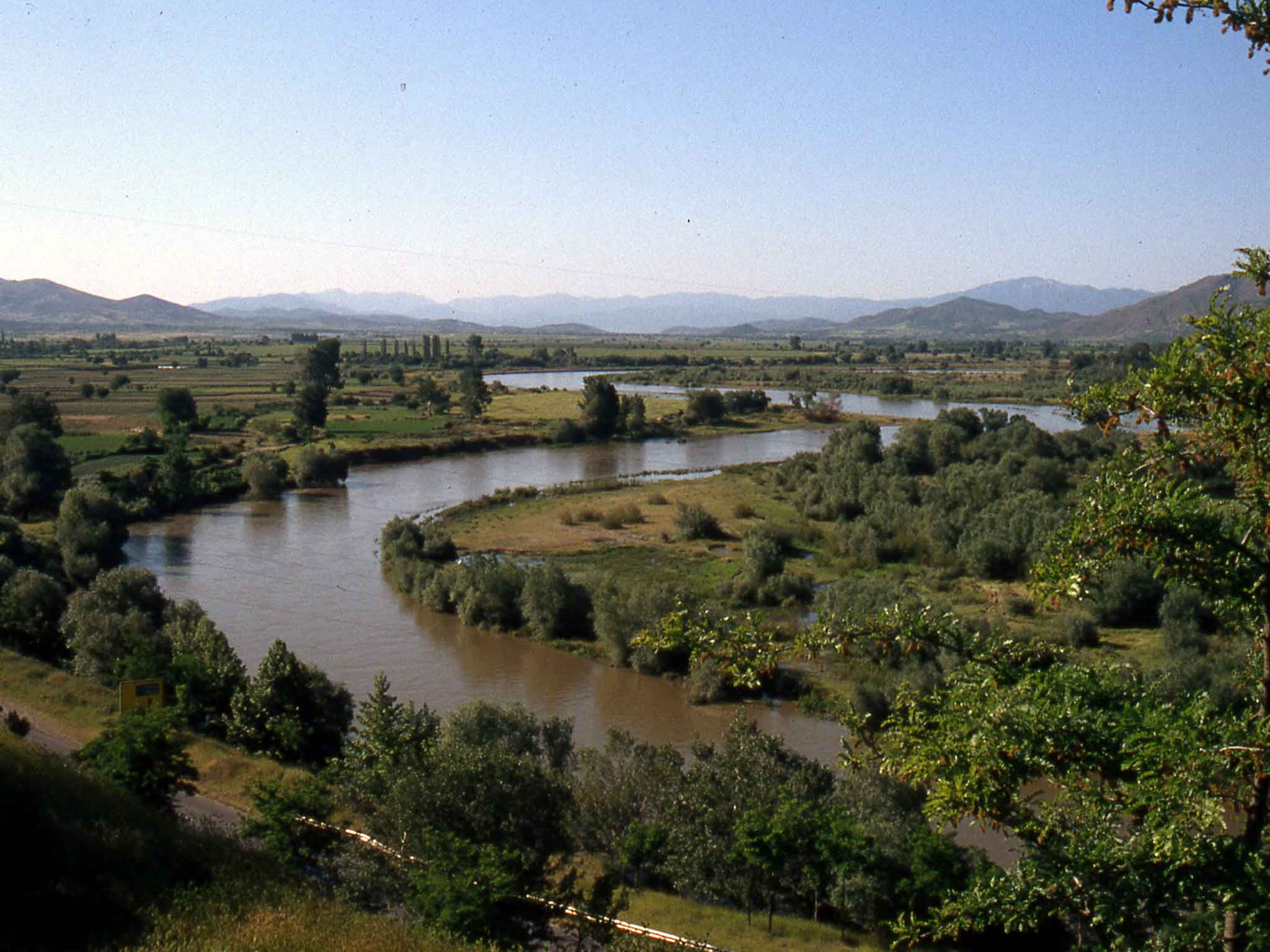
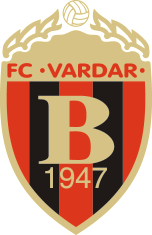

 Belgium
Belgium
 Bulgaria
Bulgaria
 Denmark
Denmark
 Germany
Germany
 Estonia
Estonia
 Finland
Finland
 France
France
 Greece
Greece
 Ireland
Ireland
 Iceland
Iceland
 Israel
Israel
 Italy
Italy
 Croatia
Croatia
 Latvia
Latvia
 Lithuania
Lithuania
 Luxembourg
Luxembourg
 Malta
Malta
 Monaco
Monaco
 Montenegro
Montenegro
 Netherlands
Netherlands
 Nordmazedonien
Nordmazedonien
 Norwegen
Norwegen
 Austria
Austria
 Poland
Poland
 Portugal
Portugal
 Romania
Romania
 Russia
Russia
 San Marino
San Marino
 Sweden
Sweden
 Switzerland
Switzerland
 Serbia
Serbia
 Slovakia
Slovakia
 Slovenia
Slovenia
 Spain
Spain
 Czech Republic
Czech Republic
 Turkey
Turkey
 Ukraine
Ukraine
 Hungary
Hungary
 United Kingdom
United Kingdom

 Science and technology
Science and technology
 Cyprus
Cyprus

 Hand in Hand
Hand in Hand
 Architecture
Architecture
 History
History
 Religion
Religion
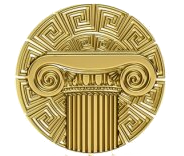 Civilization
Civilization
 Economy and trade
Economy and trade
 International cities
International cities
 Geography
Geography
 Sport
Sport